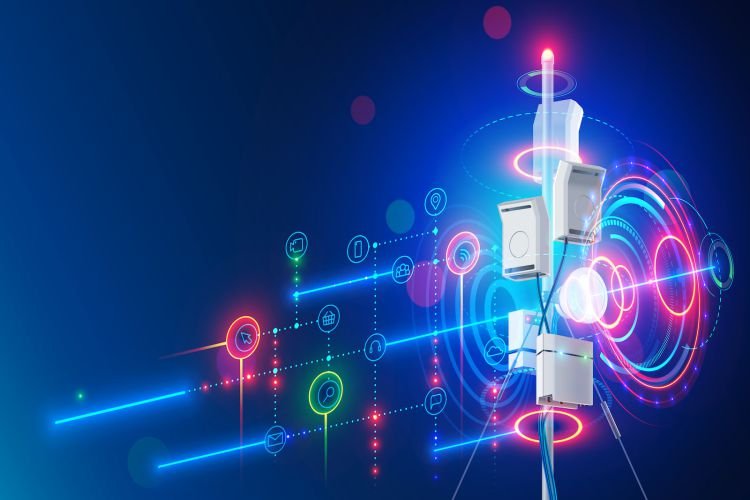 Wireless connectivity fuels energy, health care, public safety, and transportation innovation. It also helps businesses increase efficiency.
Wireless connectivity fuels energy, health care, public safety, and transportation innovation. It also helps businesses increase efficiency.
5G is a new wireless network technology expected to offer faster speeds than 4G. It can provide data at up to one Gigabit per second.
Moreover, 5G will be able to transmit data over different frequencies. Facilities need to start planning their infrastructure now to accommodate 5G.
Cellular Communication
Cellular communication is a wireless technology that allows mobile devices to communicate with one another. It uses radio signals to transmit data, including voice and video. Millions worldwide use cellular communication technologies, allowing people to stay connected regardless of location. They can also be used in emergencies to help rescuers find trapped people. This technology is also helpful in disaster prevention, as it can notify local authorities of potential threats.
AT&T Wireless cell phone technology has come a long way since its inception and continues evolving rapidly. The most recent cellular technology is LTE (Long-Term Evolution), which provides high-speed data communication over the air. It is based on orthogonal frequency division multiplexing, which enables simultaneous transmission and reception. It is designed to handle many more subscribers than previous generations of cellular phones.
Unlike the circuit-switched networks before, 5G is entirely software-driven, meaning that updates can be executed instantly. This makes it much more efficient and flexible than a traditional cellular network, and it can run on any hardware. However, this approach does have some drawbacks.
The next generation of mobile network standards will be 6G. It will establish new technology to meet the demands of emerging applications that require massive connectivity. This will include advanced business developments and self-driving cars with stringent low latency and reliability requirements.
Bluetooth Technology
Bluetooth technology is a short-range wireless communication protocol that connects devices such as wireless headphones, speakers, mobile phones & keyboards & mice to personal computers. It operates in the unlicensed 2.4 GHz ISM band & uses radio frequencies rather than infrared, making it more secure than traditional infrared. It was initially developed in 1998 by Ericsson & Motorola to free mobile phones, PCs & PDAs from wires & allow them to interact without needing a line of sight between the devices.
The Bluetooth specification is periodically updated to keep pace with improvements in performance & expanding use cases. It has built-in security capabilities, including encryption & authentication & pairing mechanisms like PIN entry to safeguard against unwanted access or connectivity.
A newer version of the Bluetooth standard, Bluetooth Low Energy or BLE, has significantly reduced power consumption & cost while maintaining the same communication range as Classic Bluetooth. It supports multiple network topologies, including point-to-point, broadcast & mesh, providing more flexibility & enabling more devices to connect without needing a central hub.
Bluetooth is also used to transmit information between a smartphone and a smart home hub or to control industrial equipment such as test equipment, GPS receivers, bar code scanners & traffic controls. In addition, Bluetooth has been tested in a hospital environment to ensure it does not interfere with medical devices like ECG machines & pulse oximeters.
Wi-Fi Technology
As the Internet of Things (IoT) grows, demand for high-speed data transfer is increasing. New wireless network technologies can enable IoT devices to connect and share data and communicate with other systems over long distances. This can help reduce costs and increase manufacturing, healthcare, and transportation efficiency.
For example, manufacturers use Wi-Fi to control equipment in automated production. They also use it for Automated Optical Inspection, or AOI, which requires high bandwidth to take high-definition photos and upload them to servers. These photos can then be analyzed to improve processes.
With the development of 5G cellular and next-generation wireless LANs (Wi-Fi 6), we will see a massive increase in data traffic. To meet this demand, companies are developing technology to make networks more scalable and secure.
For instance, Massive MIMO (multiple-input multiple-output) increases data capacity by enabling multiple signals to be transmitted simultaneously. It can also be used to improve reliability. Other innovations include Licensed Assisted Access (LAA) and MulteFire, which uses unlicensed spectrum to enhance performance and security.
New wireless technology can also expand Internet access in remote areas where wired technology is impractical. For example, Facebook, Google, and SpaceX are working on projects that will beam Internet connectivity down to people on the ground from drones or satellites. This can bring new opportunities to people who don’t have access to the Internet, allowing them to participate in global economies and conversations.
Internet of Things
IoT devices are a fast-growing trend in wireless technology. These gadgets include an intelligent lightbulb that can be switched on using a smartphone app to connect streetlights, cars, and more. IoT can also improve worker safety in industrial settings by tracking equipment and sending data on its condition to the cloud for analysis and monitoring. This information can help prevent accidents and ensure workers are notified or rescued promptly when an accident occurs.
Other IoT applications can make our lives easier by automating routine tasks. For example, innovative home technologies can tell you when you wake up, brush your teeth, and even what music you’re listening to. They can also control your lights, thermostat and even unlock your door.
IoT can also make cities more efficient and safer by connecting infrastructure and other systems. For instance, traffic signals can be controlled to adjust to changing weather conditions. Bridges and other structures can be monitored for structural damage, so engineers can take action before a failure occurs. Vehicle sensors can track location, speed, and even road surface quality to improve navigation systems and help drivers avoid accidents.
As more and more devices become connected to the Internet, they need a way to communicate with each other. Standardization is one of the critical challenges in this area, and that’s why IoT standards like WoT are emerging. The protocol aims to simplify interconnectivity between devices by ensuring they speak the same language and can interact.




